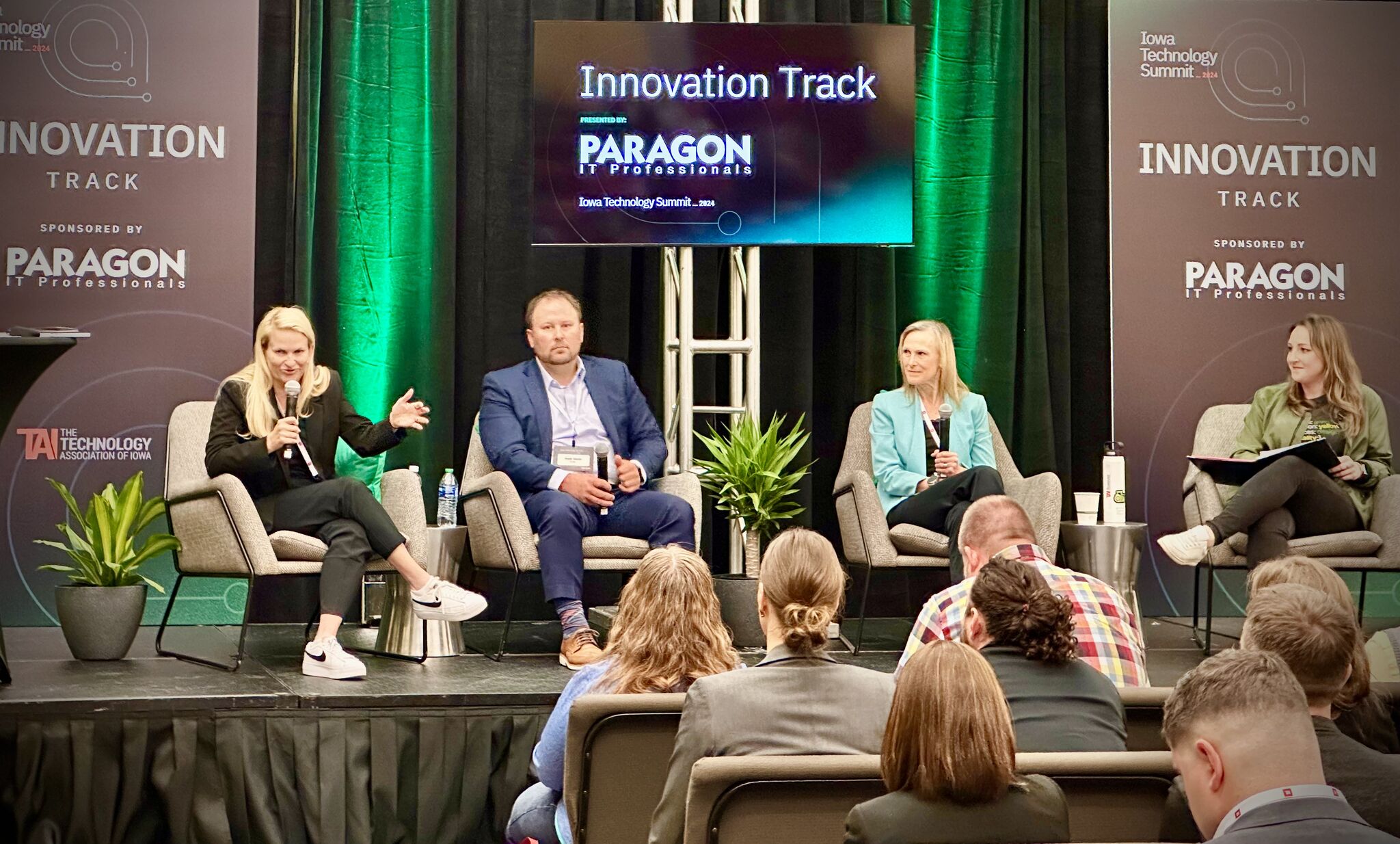Panelists speak on tech investment strategies
By Mathany Ahmed
Innovation shapes the workplace environments of many Iowans, according to three panelists at the 2024 Iowa Technology Summit, hosted by the Technology Association of Iowa in Des Moines on April 9. Still, it can be hard for business leaders to know when to invest in new technology or when it’s a passing fad.
The panelists – Travis Hoover, senior vice president and chief data officer at Hy-Vee Inc.; Kim Huffman, senior vice president and chief information officer at Workiva; and Linda Peyton, mission systems engineering senior director at Collins Aerospace – offered their thoughts on investing in tech. Here are three takeaways from their discussion.
Innovation happens quickly. It’s important for businesses to stay flexible.
While it’s important to be aware of emerging trends when the customer demands them, making long-term plans and constantly evaluating the landscape will help leaders from being surprised by changes in the tech landscape.
“When I first got started in this fabulous industry of tech, we had three-year roadmaps and five-year roadmaps,” Huffman said. “We don’t have three-year roadmaps anymore.”
Instead, Huffman said that Workiva focuses on its long-term vision and creates space for innovation along the way by partnering with other arms of the business to be ready for the inevitable time innovation will come.
“Prioritization in tech investment is a team sport,” Huffman said. “It’s not up to me; it’s up to the organization.”
Leaders need to differentiate between short-term trends and long-term transformation.
Customers have high expectations for innovation, and business leaders need to balance these expectations with the financial realities of investing in new technology.
Hoover described an experiment at Hy-Vee in response to customer requests for innovations in the check-out line.
“We wanted the ability to not use check-outs and just add items to your basket and walk out of the store,” Hoover said. “That was something we were able to deliver really quickly on, and we would have loved for that to have a more long-term strategic play.”
Even though the team was able to roll out the new technology quickly and meet the needs of some customers, ultimately, Hoover’s team concluded the innovation did not support the long-term initiatives of the company.
Careful assessments of the landscape can help leaders know when to invest and when to hold back, according to Peyton. She said the team at Collins Aerospace were thinking of how to address today’s problems “upwards of five to 10 years ago,” Peyton said. “You have to make very conscious decisions based on what the customer needs and what the environment is.”
Change and uncertainty are constants in the field of innovation.
Each panelist said they are finding that in the tech industry, not much has stayed the same.
“If I look back 10 years ago, there’s not much that’s the same,” Hoover said. “You continue to be uncomfortable, you continue to take on the next challenge, and you continue to be uncertain about what the next new thing is.”
One way to combat the uncertainty is by staying connected to companies’ core values.
“Looking at our core businesses, our values and who we are as a company still drives a lot of our strategy,” Peyton said. “We really continue to build upon those as we potentially take on new things.”
